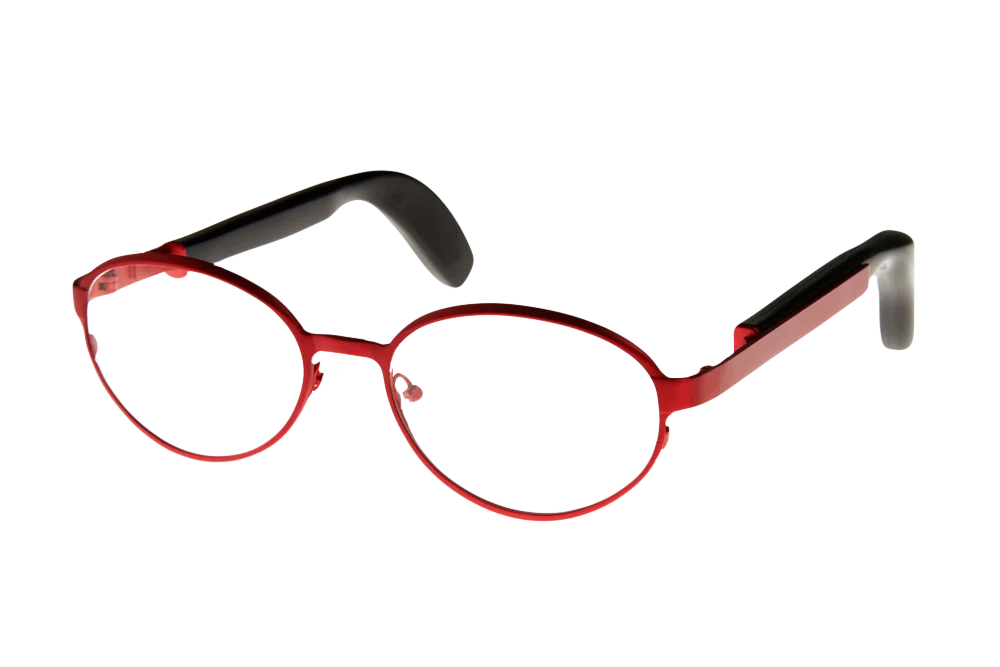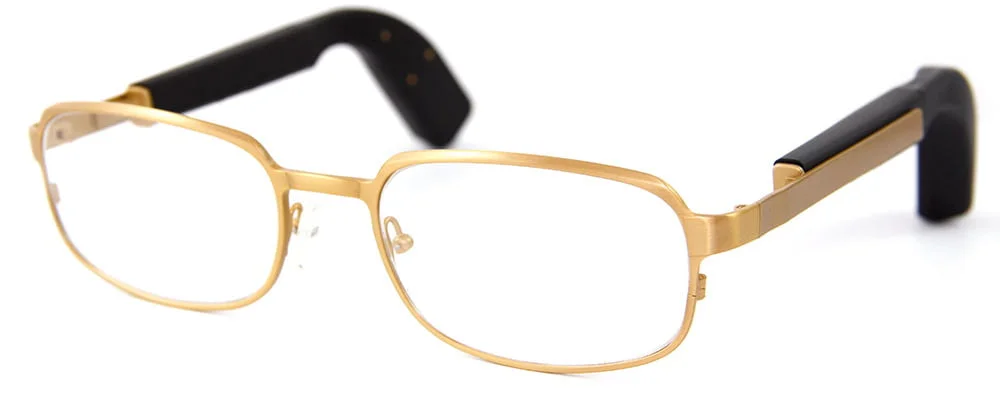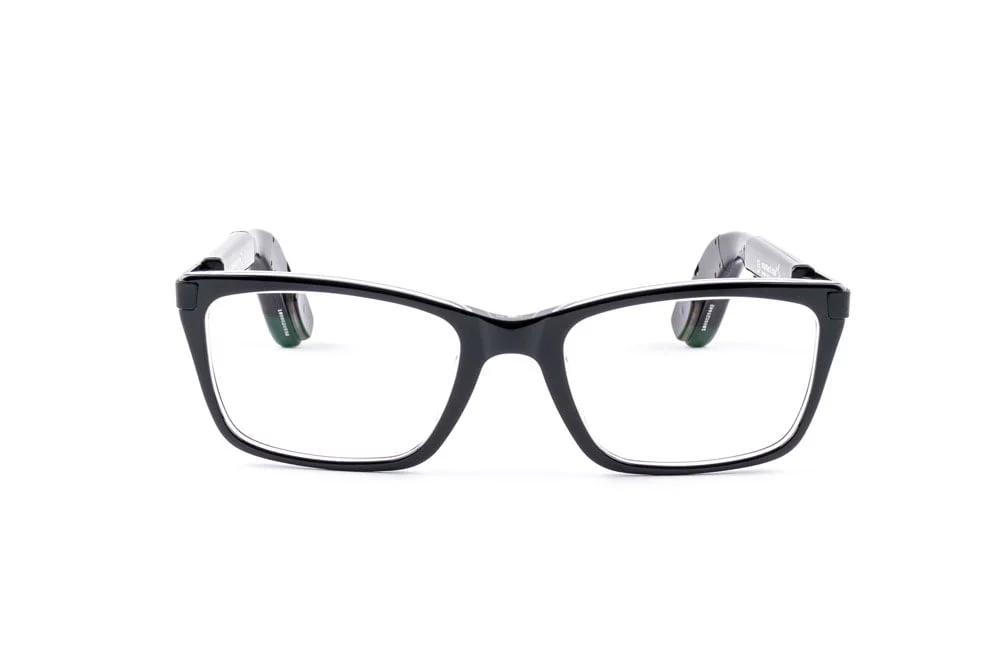Bone Conduction Devices
Demos of bone conduction devices are available on request:
Bone Conduction Hearing Aid Technology
Hear4U is proud to introduce our new line of bone conduction hearing aids, designed to give you the power of conventional hearing aids with the subtlety you expect from 21st-century hearing aid technology. Whether you suffer from mild or moderate hearing loss, the new F228D Bone Conduction Spectacles will give you the freedom to experience your life to the fullest thanks to its High Fidelity 8 Channel sound processor and customizable programming – all without the need for surgery. Some of the other features include:
- Volume Control
- Feedback Cancellation
- 8 Channel sound processor (WDRC)
- Tone Filters (HighCut & LowCut)
- 16 Equaliser Bands
- O-T-M Switch
- First Fitting Algorithm for Bone Conduction Hearing Aids
- Low Battery Warning
- MPO Programming
- Battery Size 675
- Spectacle arms available in a variety of attractive spectacle frame fronts

Glasses Frame
Bone Conduction Processor
Bone Conduction Electrical Elements
Sound Dynamics
Without you needing to do anything, this hearing system will be helping you make the most of all types of sound environments. This is down to the digital algorithm that continuously analyses the acoustic environment and applies the most appropriate parameter changes to the sound for betting hearing wherever you may be.
How Does A Bone Conduction Hearing Device work?
The inner ear receives sound stimulus by two different means:
- Air conduction
- Bone conduction
To understand how bone conduction works, it is useful to know how sound is delivered to the bone by conventional hearing aids.
Behind The Ear (BTE) or In The Ear (ITE) hearing aids use air conduction to deliver sound into the ear canal.

The sound waves cause the tympanic membrane (eardrum) to vibrate, which in turn causes the movement of the chain of bones in your middle ear space which are called the ossicles.
The three ossicles (malleus, incus, and stapes) decrease in size along the chain which means the rate of movement is at its peak at the footplate of the final bone – the stapes.
This footplate is pinpointed onto the oval window of the cochlear and passes the vibrations received along the chain to it.
After this point, a complex mechanism occurring inside the cochlear causes a message to be sent to the brain via the auditory nerve about what we have heard.
Bone conduction devices effectively bypass all before this complex mechanism and deliver sound stimulus directly to the temporal bone in which the cochlear is situated.
This is done by either the tight placement of a digital sound processor and vibration receiver onto the sides of the head or by the surgical implantation of a titanium abutment to which the processor can be attached.
At Hear4U we are offering the non-surgical option utilising the device being incorporated into the arms of spectacles.
Candidacy For Bone Conduction Solutions:
As bone conduction devices bypass the outer ear, candidates for their use include any reason that a conventional hearing system cannot be worn or will not give sufficient benefit. Some of these reasons are listed here:
- Aural Atresia – The absence of an ear canal
- Microtia – The underdevelopment or malformation of the pinna
- Destructive surgery or injury affecting the canal volume or middle ear structures
- Ossicular disease
- Chronic Otitis Media (a chronic infection causing the continuous drainage of fluid into the ear canal)
- Otosclerosis
Severe allergies to the various materials that ear molds or domes are made from skin sensitivities:- Eczema
- Cholesteatoma
The audiogram also needs to be considered for candidacy. Pure tone audiometry is conducted to better determine whether a traditional hearing aid or a bone conduction hearing aid is the right hearing solution for you.

Key Advantages Over Conventional Hearing Aids
Some of the key advantages of a bone conduction hearing device over an air conduction hearing device are:
- No earmould or custom in-ear shaping is required – therefore no impressions need to be taken
- No tubing or wires – things that are usually visually identified as a hearing aid
- No irritation of the ear canal
Less distortion of sound – for those with a conductive element to their hearing loss, traditional hearing aids have to deliver more sound to compensate for what is known as the air-bone gap. The greater the intensity of sound the hearing device has to deliver, the more potential there is for that sound to be distorted. With bone conduction hearing devices, less overall gain is required as the sound is delivered via a different pathway. This also lessens the likelihood of feedback issues - No occlusion effect which occurs when vibrations bounce off of the object filling the outer ear and/or canal
Ready To Get Clearer Hearing?
- Home Appointments
- Expert Audiologists
- Advanced Hearing Tests
- Independent & Family Run
- Private Hearing Care
Thoroughly recommend them. The ability to hear clearly and immediately was brilliant.
Jane H







